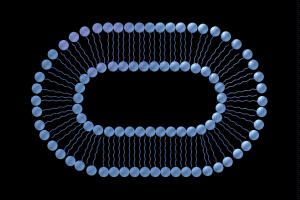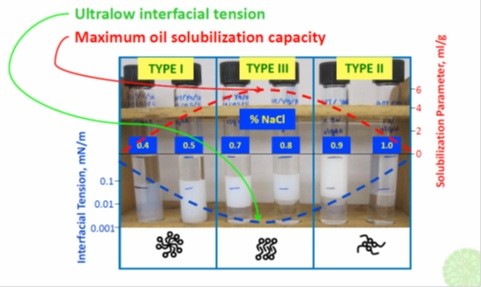A characteristic property of surfactant molecules is their tendency to aggregate at interfaces. Examples are adsorption on solids and monolayer formation at an air-water interface. Surfactants will sometimes create their own interface by forming very small aggregates like micelles or vesicles to remove a portion of their structure from contact with a solvent. On the other hand, surfactant aggregates can form separate thermodynamic phases such as microemulsions and coacervates.
An important facet of research at IASR is the investigation of the similarities and differences between the many aggregates that surfactants can form, both in single surfactant systems and in mixtures of surfactants. Because some of the same effects are responsible for the formation of many of the aggregates, comparison of aggregation thermodynamics can shed light on surfactant interactions in the process of clustering under different conditions. This type of approach, which should lead to comprehensive theories of several aggregation processes, is a unique aspect of IASR research.



